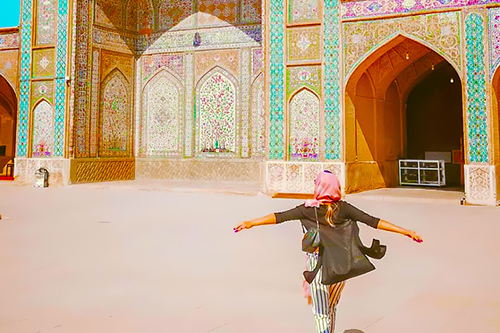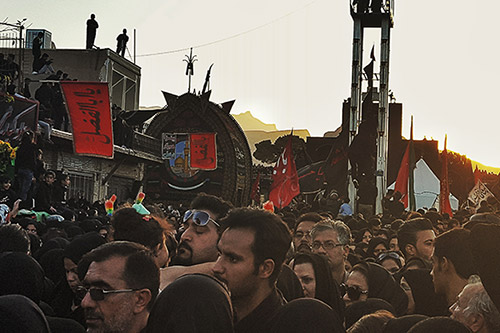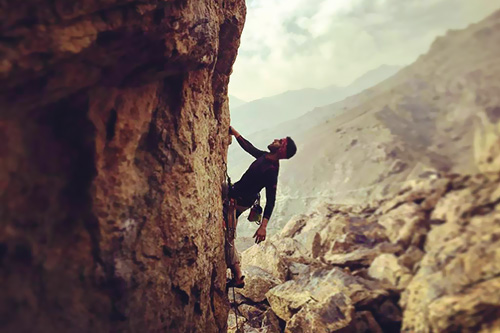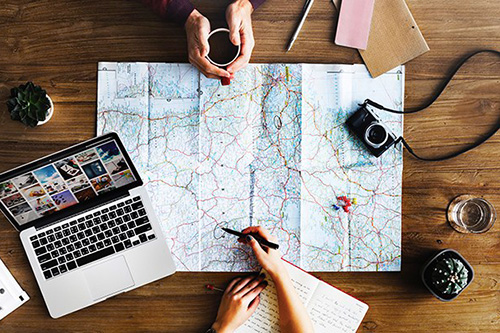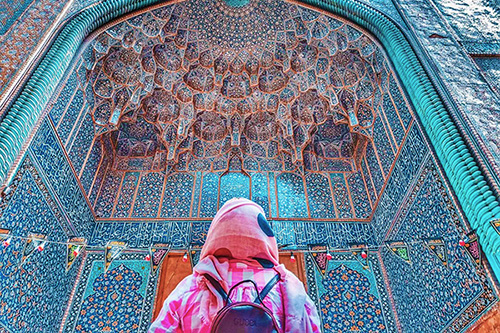 Signin with Google
Signin with Google Signin with Facebook
Signin with Facebook About Iran
About IranTop Things To Do in Isfahan
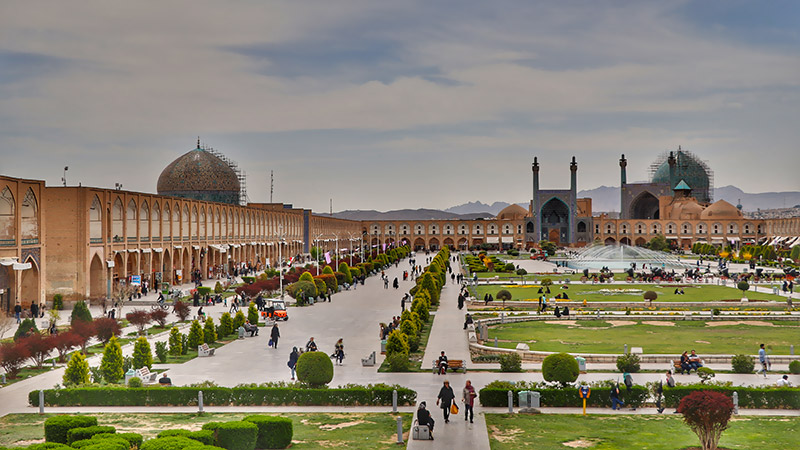
Welcome into "half of the world": Isfahan, the glorious capital of the Safavid Empire. Nowadays the third biggest city in Iran, this elegant town has kept a peaceful atmosphere, walking by the historic bridges that cross its river. The cultural capital of the country, Isfahan is recognized by UNESCO for its local and traditional artcraft which can be observed in its vibrant bazaar. And of course, between its iconic mosques and delicate palaces, the city displays some of the best architectural pieces of the Islamic world.
Naqsh-e Jahan Square, the patterns of the world
At the centre of the city is Isfahan's most famous landmark, a square with unrivalled beauties and architectural masterpieces. Naqsh-e Jahan, whose name means "patterns of the world", is one of the world's biggest public plazas and a World Heritage Site. Built under the reign of Shah Abbas the Great, it was meant to signal the importance of the city as the Safavid Empire's capital, and holds some of Iran's finest monuments: the Shah Mosque, the Sheikh Lotfollah Mosque, Ali Qapu Palace and Qeysarieh Portal. At the centre of this rectangular square, where 400 years of polo games were watched, is now a place to taste the delicate atmosphere of the city.
Shah (or Imam) Mosque, the jewel of Islamic architecture
Completed in 1627, the UNESCO-listed Shah Mosque is a masterpiece of Islamic architecture, and without a doubt one of the most beautiful mosques in the world. Visitors from the Silk Road era to nowadays have dreamt of the sight of this stunning religious building, which seems to preside over Naqsh-e Jahan Square. The perfect proportions of its delicate blue-tiled dome, its monumental portal decorated with muqarnas and surrounded by two minarets, and the splendid sculpted iwans of its interior court are endless wonders to the visitor's eyes. Under the 38 meters of the cupola is an extraordinary acoustic that add to the enchantment of the place.
Sheikh Lotfollah Mosque, the delicate splendour of the royal mosque
If the splendours of Sheikh Lotfollah Mosque equal the beauty of the Shah Mosque, it's nevertheless a singular religious place. Built for the private use of the royal family under the reign of Shah Abbas, this mosque is simply made of a single prayer hall and doesn't have any minaret. Yet, from outside, the magnificence of its golden creamy dome, covered with tilework and arabesque, catch the eye. Once inside, under the high cupola of the mosque, visitors can feel the intact spiritual atmosphere of the place, mesmerized by its beauty: all over the walls and ceiling, the finest tile work and mosaics are displaying complex designs and calligraphies which are an invitation to timeless contemplation.
Hanging out on Isfahan's Bridges
Splitting the city into two sides, the Zayandeh-Rood, whose name means "life-giver", is like a beloved member of the city. No less than eleven historical bridges are crossing the river and are both architectural wonders and popular destinations. Isfahanis like to gather all along the river and over the bridges, especially in the evening, when the bridges are lit up. The most famous one is probably the "Si o Seh Pol", built in the 17th century. Over 300 meters, it's a harmonious succession of 33 symmetrical arches. At night, walk under another famous arched bridge, "Pol-e Khaju", to listen to singers and musicians, who takes advantage of the echo of this famous landmark to marvel the passerby. A bit further away, is a witness of history, with Pol-e Shahrestan, the oldest bridge in Isfahan, dating back to the 12th century.
The Great Bazaar, enter the maze of art craft
The Great Bazaar of Isfahan spread from the beautiful Naqsh-e Jahan Square to the Jameh Mosque. Developed in the 17th century, Isfahan's bazaar is probably one of the most beautiful in Iran. It's a stunning intricacy of bricked alleys, caravanserais, madrasahs, domes... which seems to never end. One could spend a day wandering into the maze of the bazaar, from the copper section to the colourful spice section. Isfahan's bazaar is the best place to observe the crafting of Persian handicrafts as the city is recognized for its numerous arts and quality workshops.
Ali Qapu and Chehel Sotun Palace, from dazzling mirrors to elegant paintings
These two palaces are a showcase of Persian arts. Dominating Naqsh-e Jahan Square, Ali Qapu Palace is a stunning wooden structure decorated with the finest paintings, tiles, and mirror work, all over six floors. At the top, the music room is a true architectural masterpiece, with its curved plaster muqarnas and its exceptional acoustic, while the terrace offers an outstanding view over the square. Close by, the Chehel Sotun Palace compete with Ali Qapu's beauties. Built under the Safavid, this UNESCO-listed pavilion overflows with fine frescoes and paintings. It stands in the middle of a peaceful and perfectly symmetrical garden, with a central pool reflecting the 20 wooden columns of the palace, hence its name.
The Jameh Mosque, a showcase of Persian architecture
First built in the 8th century, this mosque had more than 1000 years of additions and reconstructions, resulting in a mix of Islamic and Persian architecture covering several eras. It's this fabulous blend that makes it so unique and nowadays a World Heritage Site. Its four impressive iwans are decorated with fine tile work and mosaics from the bottom to the top and contrast with the sobriety of the interior bricked prayer halls. Located at the northern end of the Grand Bazaar, the Jameh Mosque seems hidden at the heart of the city and has remained a major part of its social life. Still functioning today, it resonates with the prayers of the faithful every Friday.
Vank Cathedral, the jewel of the Armenian neighbourhood
It's without a doubt the most beautiful church in Iran: Vank Cathedral is located south of the city, in the pleasant area of Jolfa where lives a community of 6000 Armenians. In the 17th century, hundreds of thousands of Christian Armenians came from northwest Iran to settle down in the Safavid capital. They built this stunning and elegant church at the heart of their neighbourhood. From the outside, its sober bricked walls with its small bell tower is a faithful example of Armenian architecture. Stepping inside, visitors are mesmerized by the incredible paintings covering the walls and ceiling of the cupola: it's a boast of elaborate frescos, mainly in golden and blue tones, depicting the Biblical story of the creation of the world and man's expulsion from Eden. Inside the church's complex is a small museum dedicated to the lives of Armenian Christian and the memories of the Genocide. After visiting the Vank Cathedral, roam into the streets of Jolfa to feel the pulse of this liberal quarter, full of cosy cafes and trendy restaurants.
Varzaneh desert, its pristine sand dunes and pure night sky
Going from, or to Isfahan, don't miss the opportunity to have an excursion into Dasht-e Kavir. The small desert town of Varzaneh is located about 100 km away from Isfahan and offers a totally different world. It's the only place in Iran where women cover themselves with a white chador. But it's for its stunning desert that Varzaneh is renowned, with kilometres of pristine sand dunes spreading at the doorstep of the city. Walking barefoot in the immensity of the desert is a unique experience. Wrapped into quietness and silence, spend a night in the desert to experience an unforgettable skywatching experience: here, no light pollution come to disturb the brightness of the stars, which offer the most magnificent show.
The Fire Temple, a reminiscence of the Zoroastrian's faith
Located on a hillside a few kilometres outside the city, the remains of this ancient Sassanian Fire Temple is worth a visit for its charming atmosphere. On top of the hill stands a tiny circular monument, which used to be a Zoroastrian Fire Temple. On the southern part of the hill, there are remains of a citadel and other buildings intended to host the priests and pilgrims. If not much is left of these religious and historical buildings, the panoramic view the site offers on the city and the Zayandeh Rud is worth the climbing. It's a pleasant 20 minutes walk in nature, following the river's bed, ending up with an idyllic view over the city and the mountains, at 210 meters height.
Climb Sofeh Mountain, the natural paradise of Isfahanis
Not far away from the city are the natural splendours of the Sofeh Mountain. Every evening and weekend, Isfahanis come here with their family to get some fresh air and entertainment outside of the city. For climbing lovers, reaching the top of the mountain takes an hour or two of climbing. Others can opt for the telecabin to be transported on top. From there can be appreciated splendid landscapes over Isfahan and its natural surroundings. At the foothill of the mountain is the Sofeh Park, which also offers nice hiking trails and is considered as one of the best forests parks in Iran.
